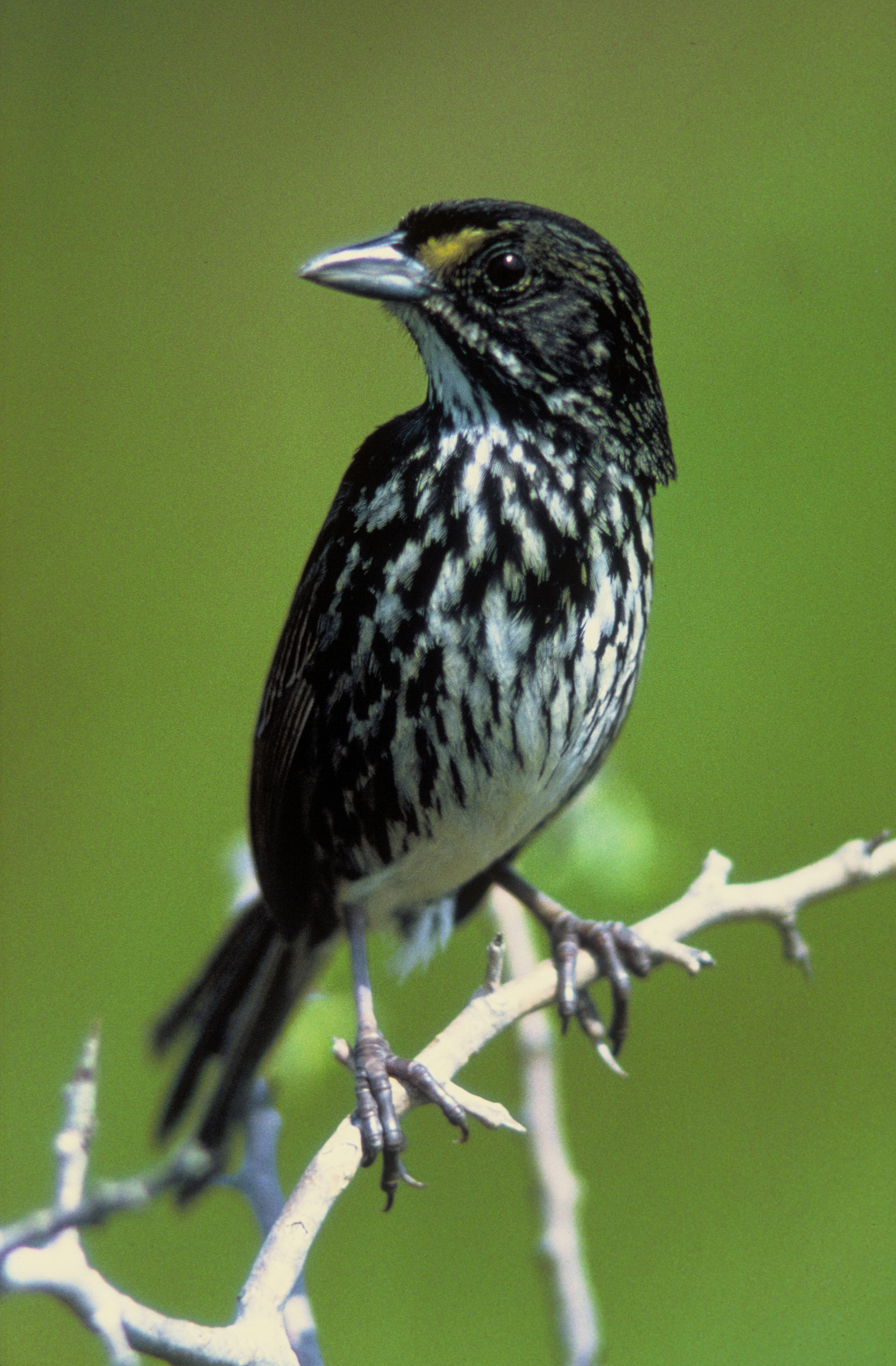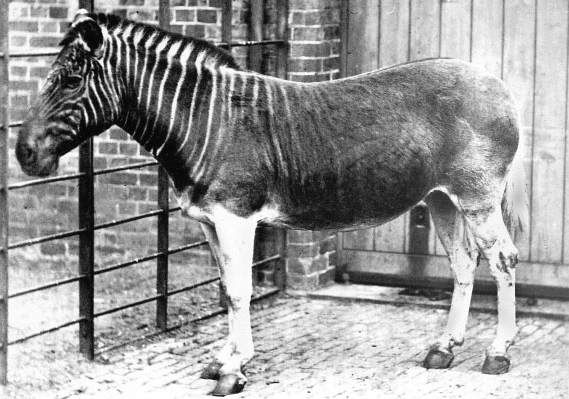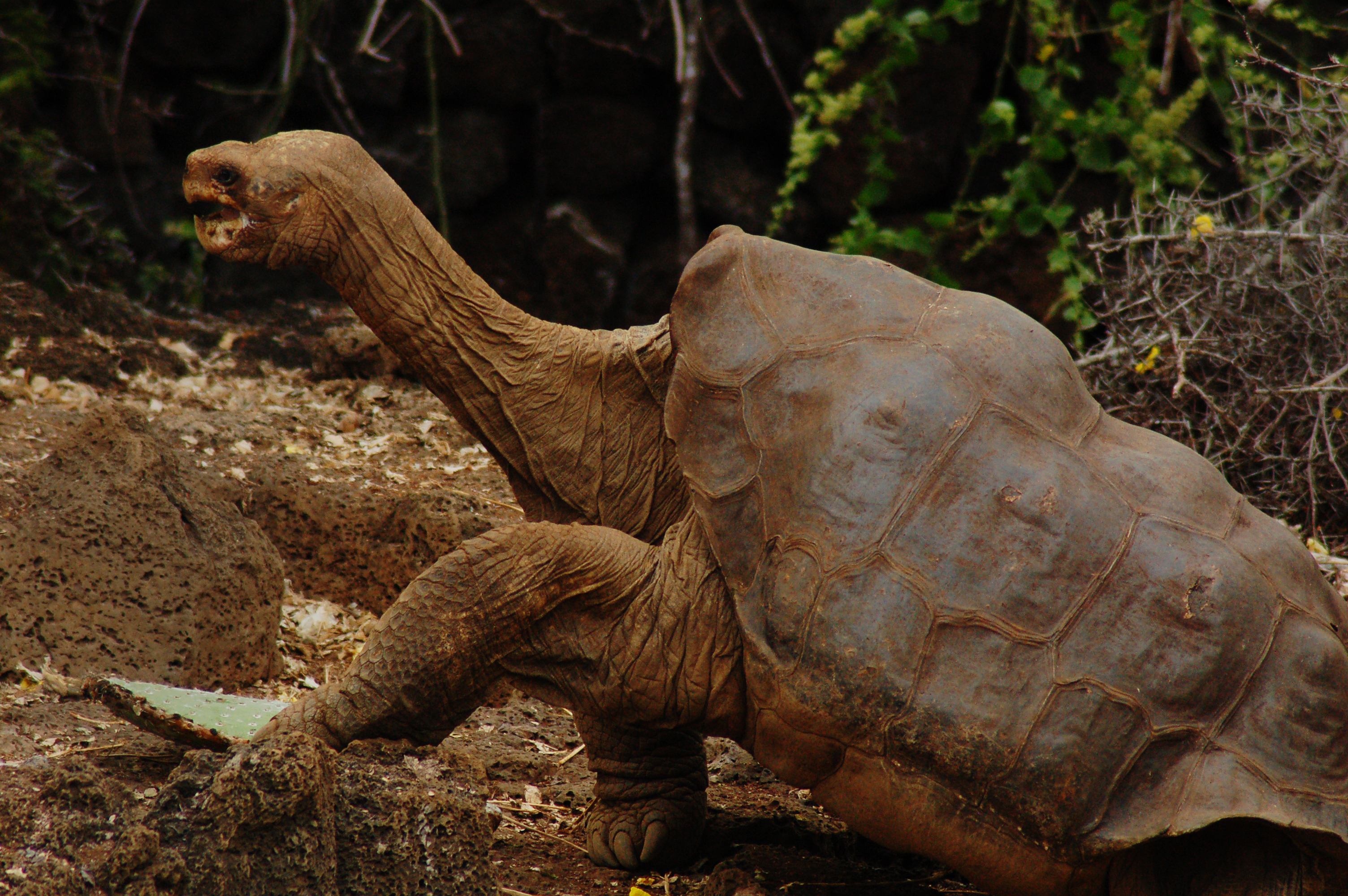Endling on:
[Wikipedia]
[Google]
[Amazon]
An endling is the last known individual of a
 * The
* The
 * The
* The
 * On 24 June 2012, Lonesome George, who was the last known
* On 24 June 2012, Lonesome George, who was the last known  * After being considered possibly extinct for 113 years, a Fernandina Island Galápagos tortoise was found in 2019. However, this female is the only confirmed individual.
* After being considered possibly extinct for 113 years, a Fernandina Island Galápagos tortoise was found in 2019. However, this female is the only confirmed individual.
"The Last of Its Kind"
''The Atlantic'', July 2019. Accessed June 28, 2019.
''What Do You Call the Last of a Species?''
by Michelle Nijhuis for
''Cut from history''
by Eric Freedman fo
Knight Center for Environmental Journalism
''Bringing Them Back to Life''
by
species
In biology, a species is the basic unit of classification and a taxonomic rank of an organism, as well as a unit of biodiversity. A species is often defined as the largest group of organisms in which any two individuals of the appropriate s ...
or subspecies. Once the endling dies, the species becomes extinct. The word was coined in correspondence in the scientific journal ''Nature
Nature, in the broadest sense, is the physical world or universe. "Nature" can refer to the phenomena of the physical world, and also to life in general. The study of nature is a large, if not the only, part of science. Although humans are ...
''. Alternative names put forth for the last individual of its kind include ender and terminarch.
The word relict
A relict is a surviving remnant of a natural phenomenon.
Biology
A relict (or relic) is an organism that at an earlier time was abundant in a large area but now occurs at only one or a few small areas.
Geology and geomorphology
In geology, a r ...
may also be used, but usually refers to a population, rather than an individual, that is the last of a species.
Usage
The 4 April 1996 issue of ''Nature
Nature, in the broadest sense, is the physical world or universe. "Nature" can refer to the phenomena of the physical world, and also to life in general. The study of nature is a large, if not the only, part of science. Although humans are ...
'' published a correspondence in which commentators suggested that a new word, ''endling'', be adopted to denote the last individual of a species. The 23 May issue of ''Nature'' published several counter-suggestions, including ''ender'', ''terminarch'', and ''relict''.
The word ''endling'' appeared on the walls of the National Museum of Australia
The National Museum of Australia, in the national capital Canberra, preserves and interprets Australia's social history, exploring the key issues, people and events that have shaped the nation. It was formally established by the ''National Muse ...
in ''Tangled Destinies'', a 2001 exhibition by Matt Kirchman and Scott Guerin, about the relationship between Australian peoples and their land. In the exhibition, the definition, as it appeared in Nature, was printed in large letters on the wall above two specimens of the extinct Tasmanian tiger
The thylacine ( , or , also ) (''Thylacinus cynocephalus'') is an extinct carnivorous marsupial that was native to the Australian mainland and the islands of Tasmania and New Guinea. The last known live animal was captured in 1930 in Tasma ...
: "Endling (n.) The last surviving individual of a species of animal or plant". A printed description of this exhibition offered a similar definition, omitting reference to plants: "An endling is the name given to an animal that is the last of its species."
In ''The Flight of the Emu: A Hundred Years of Australian Ornithology 1901-2001'', author Libby Robin stated that "the very last individual of a species" is "what scientists refer to as an 'endling'".
In 2011, the word was used in the ''Earth Island Journal
The Earth Island Institute is a non-profit environmental group founded in 1982 by David Brower. Located in Berkeley, California, it supports activism around environmental issues through fiscal sponsorship that provides the administrative and org ...
'', in an essay by Eric Freedman entitled "Extinction Is Forever: A Quest for the Last Known Survivors". Freedman defined ''endling'' as "the last known specimen of her species."
In ''The Sense of an Endling'', author Helen Lewis describes the notion of an endling as poignant, and the word as "wonderfully Tolkien-esque".
Author Eric Freedman describes ''endling'' as "a word with finality" , stating, "It is deep-to-the-bone chilling to know the exact date a species disappeared from Earth. It is even more ghastly to look upon the place where it happened and know that nobody knew or cared at the time what had transpired and why."
Notable endlings
This is not a comprehensive list of contemporary extinction, but a list of high-profile, widely publicised examples of when the last individual of a species was known.Birds
 * The
* The passenger pigeon
The passenger pigeon or wild pigeon (''Ectopistes migratorius'') is an extinct species of pigeon that was endemic to North America. Its common name is derived from the French word ''passager'', meaning "passing by", due to the migratory habits ...
(''Ectopistes migratorius'') became extinct at 1 p.m. on 1 September 1914 with the death of Martha
Martha (Hebrew: מָרְתָא) is a biblical figure described in the Gospels of Luke and John. Together with her siblings Lazarus and Mary of Bethany, she is described as living in the village of Bethany near Jerusalem. She was witness ...
, the last surviving member of the species, at the Cincinnati Zoo.
* Incas
The Inca Empire (also known as the Incan Empire and the Inka Empire), called ''Tawantinsuyu'' by its subjects, ( Quechua for the "Realm of the Four Parts", "four parts together" ) was the largest empire in pre-Columbian America. The adm ...
, the last known Carolina parakeet
The Carolina parakeet (''Conuropsis carolinensis''), or Carolina conure, is an extinct species of small green neotropical parrot with a bright yellow head, reddish orange face and pale beak that was native to the eastern, Midwest and plains sta ...
(''Conuropsis carolinensis''), died, also at the Cincinnati Zoo, on 21 February 1918. The species was officially declared extinct in 1939.
* Booming Ben, a solitary heath hen (''Tympanuchus cupido cupido''), was last seen 11 March 1932 on Martha's Vineyard, Massachusetts.
* Orange Band was the last known dusky seaside sparrow (''Ammodramus maritumus nigrescens'') who died on 17 June 1987 at the Discovery Island zoological park at Walt Disney World Resort
The Walt Disney World Resort, also called Walt Disney World or Disney World, is an entertainment resort complex in Bay Lake and Lake Buena Vista, Florida, United States, near the cities of Orlando and Kissimmee. Opened on October 1, 1971, ...
.
* The last survivor of the rufous-fronted laughingthrush
The rufous-fronted laughingthrush (''Garrulax rufifrons'') is a bird species in the family Leiothrichidae. It is endemic to Java, where it occurs in evergreen tropical montane forests at . It feeds on insects and fruit.
Description
It is in le ...
subspecies ''Garrulax rufifrons slamatensis'' is a female in a rescue station on Java.
Mammals
* In 1627, the last aurochs, an ancestor of bovine and cattle, died in a forest near what is now Jaktorów in modern-day Poland. * The
* The quagga
The quagga ( or ) (''Equus quagga quagga'') is a subspecies of the plains zebra that was endemic to South Africa until it was hunted to extinction in the late 19th century. It was long thought to be a distinct species, but early genetic ...
(''Equus quagga quagga'') became extinct in the wild in the late 1870s due to hunting for meat and skins, and the subspecies' endling died in captivity on 12 August 1883 at the Artis in Amsterdam
Amsterdam ( , , , lit. ''The Dam on the River Amstel'') is the capital and most populous city of the Netherlands, with The Hague being the seat of government. It has a population of 907,976 within the city proper, 1,558,755 in the urban ar ...
.
* On 7 September 1936, Benjamin, the last known Tasmanian tiger
The thylacine ( , or , also ) (''Thylacinus cynocephalus'') is an extinct carnivorous marsupial that was native to the Australian mainland and the islands of Tasmania and New Guinea. The last known live animal was captured in 1930 in Tasma ...
(''Thylacinus cynocephalus'') died in Hobart Zoo
The Hobart Zoo (also known as Beaumaris Zoo) was an old-fashioned zoological garden located on the Queen's Domain in Hobart, Tasmania, Australia. The Zoo site is very close to the site of the Tasmanian Governor's House, and the Botanical Gard ...
, after the species was hunted to extinction by farmers. It has been suggested Benjamin died of neglect during a night of unusually extreme weather conditions in Tasmania. Benjamin was also the last living individual of the family Thylacinidae
Thylacinidae is an extinct family of carnivorous, superficially dog-like marsupials from the order Dasyuromorphia. The only species to survive into modern times was the thylacine (''Thylacinus cynocephalus''), which became extinct in 1936.
The ...
.
* Celia, the last Pyrenean ibex (''Capra pyrenaica pyrenaica''), was found dead on 6 January 2000 in the Spanish Pyrenees, after hunting and competition from livestock reduced the population to one individual.
Reptiles and amphibians
 * On 24 June 2012, Lonesome George, who was the last known
* On 24 June 2012, Lonesome George, who was the last known Pinta Island tortoise
The Pinta Island tortoise (''Chelonoidis niger ''), also known as the Pinta giant tortoise, Abingdon Island tortoise, or Abingdon Island giant tortoise, was a subspecies of Galápagos tortoise native to Ecuador's Pinta Island.
The subspecies wa ...
(''Chelonoidis niger abingdonii''), died in his habitat in the Galápagos Islands
The Galápagos Islands (Spanish: , , ) are an archipelago of volcanic islands. They are distributed on each side of the equator in the Pacific Ocean, surrounding the centre of the Western Hemisphere, and are part of the Republic of Ecuador ...
.
* Until September 26, 2016, the Atlanta Botanical Garden was home to the last known surviving Rabbs' fringe-limbed treefrog (''Ecnomiohyla rabborum'') named " Toughie".
 * After being considered possibly extinct for 113 years, a Fernandina Island Galápagos tortoise was found in 2019. However, this female is the only confirmed individual.
* After being considered possibly extinct for 113 years, a Fernandina Island Galápagos tortoise was found in 2019. However, this female is the only confirmed individual.
Invertebrates
* Turgi was the last '' Partula turgida'', a Polynesian tree snail, who died on 31 January 1996 in the London Zoo. * A tank in the Bristol Zoo was the last refuge of ''Partula faba
''Partula faba'' (bean snail, Partula snail,
" Island Biodiversity. Accessed July 31, 20 ...
'', a land snail from Ra'iātea in French Polynesia. The population dropped from 38 in 2012 to one in 2015. The last individual died on 21 February 2016.
* " Island Biodiversity. Accessed July 31, 20 ...
George
George may refer to:
People
* George (given name)
* George (surname)
* George (singer), American-Canadian singer George Nozuka, known by the mononym George
* George Washington, First President of the United States
* George W. Bush, 43rd Presid ...
was the last known individual of the Oahu tree snail species ''Achatinella apexfulva
''Achatinella apexfulva'' is a reportedly extinct species of colorful, tropical, arboreal pulmonate land snail in the family Achatinellidae, once present on Oahu, Hawaii. ''A. apexfulva'' is the type species of the genus ''Achatinella''. The spec ...
''. It died on January 1, 2019, in captivity near Kailua, Hawaii.Ed Yong (2019"The Last of Its Kind"
''The Atlantic'', July 2019. Accessed June 28, 2019.
Plants
* TheCurepipe Botanic Gardens
Curepipe Botanic Gardens (or SSR Botanical Garden of Curepipe) in Route des Jardins, Curepipe, is the second largest botanical garden in Mauritius.
It has a relatively informal layout, and contains a river, lake and the world's rarest palm tree am ...
in Mauritius
Mauritius ( ; french: Maurice, link=no ; mfe, label= Mauritian Creole, Moris ), officially the Republic of Mauritius, is an island nation in the Indian Ocean about off the southeast coast of the African continent, east of Madagascar. It ...
have housed the last specimen of the palm
Palm most commonly refers to:
* Palm of the hand, the central region of the front of the hand
* Palm plants, of family Arecaceae
**List of Arecaceae genera
* Several other plants known as "palm"
Palm or Palms may also refer to:
Music
* Palm (ba ...
'' Hyophorbe amaricaulis'' since the 1950s.
* '' Pennantia baylisiana'' has only ever been known from one wild tree that still lives today. Subsequent trees were cloned, but since 1985 hundreds of trees have been propagated by self-pollination.
* Only one individual of the Wood's cycad ('' Encephalartos woodii'') has existed since it was discovered in 1895, all examples being clones of this single male individual.
* Only one living specimen of the tree species '' Madhuca diplostemon'' is known to exist.
See also
*Anthropocene
The Anthropocene ( ) is a proposed geological epoch dating from the commencement of significant human impact on Earth's geology and ecosystems, including, but not limited to, anthropogenic climate change.
, neither the International Commissio ...
* Conservation status
The conservation status of a group of organisms (for instance, a species) indicates whether the group still exists and how likely the group is to become extinct in the near future. Many factors are taken into account when assessing conservatio ...
* De-extinction
De-extinction (also known as resurrection biology, or species revivalism) is the process of generating an organism that either resembles or ''is'' an extinct species
This page features lists of extinct species, organisms that have become Extin ...
* Extinction
Extinction is the termination of a kind of organism or of a group of kinds (taxon), usually a species. The moment of extinction is generally considered to be the death of the last individual of the species, although the capacity to breed and ...
* Frozen zoo
A frozen zoo is a storage facility in which genetic materials taken from animals (e.g. DNA, sperm, eggs, embryos and live tissue) are stored at very low temperatures (−196 °C) in tanks of liquid nitrogen. Material preserved in this way c ...
(some store genetic material from endlings)
* Holocene extinction
* Last man
* Lists of extinct animals
This page features lists of extinct species, organisms that have become extinct, either in the wild or completely disappeared from Earth.
In actual theoretical practice, a species not definitely located in the wild in the last fifty years of cur ...
* List of neologisms
* Rare species
* Rememberer
References
{{reflistExternal links
''What Do You Call the Last of a Species?''
by Michelle Nijhuis for
The New Yorker
''The New Yorker'' is an American weekly magazine featuring journalism, commentary, criticism, essays, fiction, satire, cartoons, and poetry. Founded as a weekly in 1925, the magazine is published 47 times annually, with five of these issues ...
''Cut from history''
by Eric Freedman fo
Knight Center for Environmental Journalism
''Bringing Them Back to Life''
by
Carl Zimmer
Carl Zimmer (born 1966) is a popular science writer, blogger, columnist, and journalist who specializes in the topics of evolution, parasites, and heredity. The author of many books, he contributes science essays to publications such as ''The Ne ...
for National Geographic Magazine
''National Geographic'' (formerly the ''National Geographic Magazine'', sometimes branded as NAT GEO) is a popular American monthly magazine published by National Geographic Partners. Known for its photojournalism, it is one of the most widely ...
.
Animals by conservation status
Extinction